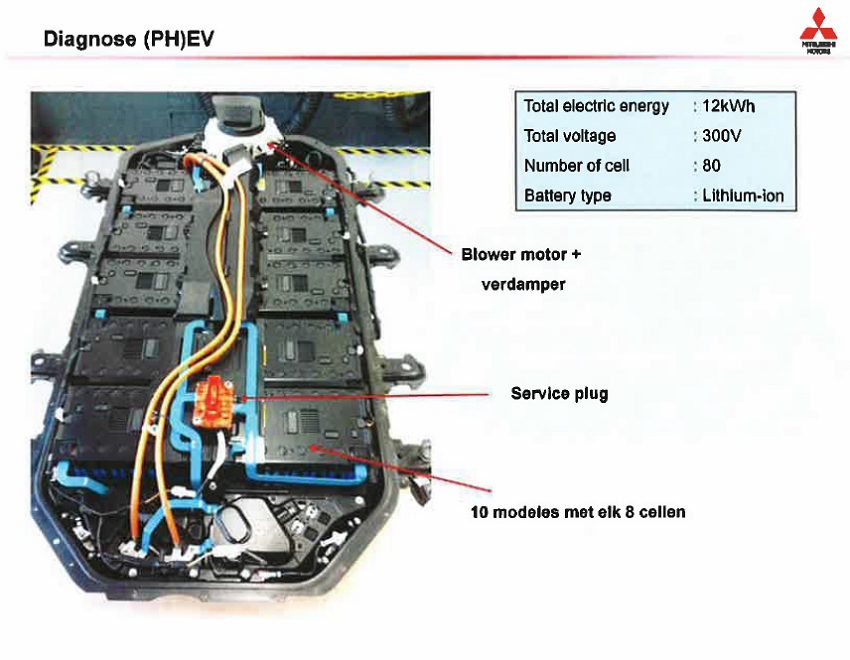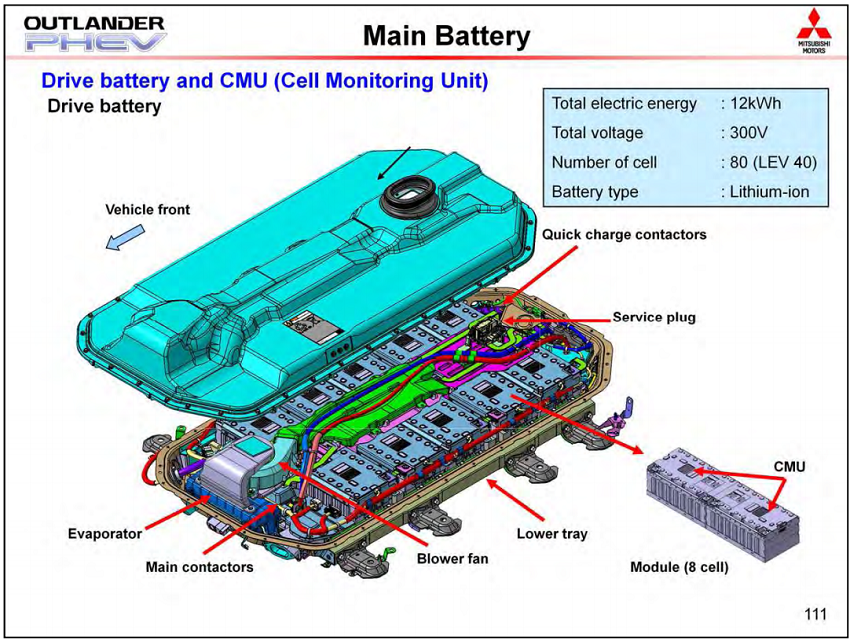Trex
Well-known member
Now as the title says Evbatmon and Phev watchdog is showing the wrong SOH amount. Now that is IMHO. Why do I think this? Well lets get some history on how they are working it out first.
I will bring in a quote from anko from another thread that I started:
Now as anko states both are using 38 Ah as a baseline for measuring because in that thread I had current capacity of 29.9 Ah divided by 38 Ah gives approx 78.68% SOH and Evbatmon was showing 78.68% and Phev watchdog was showing 78.7% at the time.
Now Mitsubishi have stated we have a 40 Ah cell capacity so I not sure why this 38 Ah is used as a baseline or anko states that this number is not known unless it is because that is mainly what they read on the OBD device when a new PHEV gets to a customer. Hell I have even seen people write that the difference between the two values is the top side buffer ie the amount not used to reduce degradation of the drive battery. Even a value for this top side buffer has been placed as 5%. I think they work this out by 38 Ah divided by 40 Ah gives 95% subtract from 100% gives that 5%.
So lets see some examples of where Mitsubishi have stated we have a 40 Ah battery capacity:
Now you can see in both these images we have a 40 Ah battery ie 12 kWh or 12,000 watts divided by 300 volts nominal gives 40 Ah as well as being called a LEV 40.
Now as another example of our battery being 40 Ah and not 38 Ah, on my battery report from the MUT-III after a drive battery recalibration (auto capacity measured procedure)
BMU data list number 18 gives me the Battery current capacity of 28.3 Ah (BTW up from 26.8 Ah ) and the BMU data list number 401 Cell current capacity difference of 11.7 Ah. Add those two ie 28.3 plus 11.7 gives 40 Ah.
Now back to my previous example above where I had a current capacity of 29.9 Ah Evbatmon and Phev watchdog should be showing 74.75% SOH (29.9/40) and not 78.68% (29.9/38) IMHO.
Also about that top side buffer I was writing about previously, this should be above that 40 Ah capacity and NOT shown as part of that 40 Ah capacity because we can never use it at the moment unlike the bottom side buffer ie below approx 26-30% SOC that can be accessed in some special circumstances.
Now I wanted to bring this up as there is so much misrepresentation IMHO about this out there I think it needs mentioning. Hell, I think, Mitsubishi have been trying to tell us the truth for years.
Regards Trex.
I will bring in a quote from anko from another thread that I started:
anko said:The capacity % is calculated by comparing Current Capacity Ah with Current Capacity when new. As this number is not known, Daniel Santos (WatchDog) uses 38 as a baseline value. I can only guess Jeremy does the same.
Now as anko states both are using 38 Ah as a baseline for measuring because in that thread I had current capacity of 29.9 Ah divided by 38 Ah gives approx 78.68% SOH and Evbatmon was showing 78.68% and Phev watchdog was showing 78.7% at the time.
Now Mitsubishi have stated we have a 40 Ah cell capacity so I not sure why this 38 Ah is used as a baseline or anko states that this number is not known unless it is because that is mainly what they read on the OBD device when a new PHEV gets to a customer. Hell I have even seen people write that the difference between the two values is the top side buffer ie the amount not used to reduce degradation of the drive battery. Even a value for this top side buffer has been placed as 5%. I think they work this out by 38 Ah divided by 40 Ah gives 95% subtract from 100% gives that 5%.
So lets see some examples of where Mitsubishi have stated we have a 40 Ah battery capacity:
Trex said:
Now you can see in both these images we have a 40 Ah battery ie 12 kWh or 12,000 watts divided by 300 volts nominal gives 40 Ah as well as being called a LEV 40.
Now as another example of our battery being 40 Ah and not 38 Ah, on my battery report from the MUT-III after a drive battery recalibration (auto capacity measured procedure)
BMU data list number 18 gives me the Battery current capacity of 28.3 Ah (BTW up from 26.8 Ah ) and the BMU data list number 401 Cell current capacity difference of 11.7 Ah. Add those two ie 28.3 plus 11.7 gives 40 Ah.
Now back to my previous example above where I had a current capacity of 29.9 Ah Evbatmon and Phev watchdog should be showing 74.75% SOH (29.9/40) and not 78.68% (29.9/38) IMHO.
Also about that top side buffer I was writing about previously, this should be above that 40 Ah capacity and NOT shown as part of that 40 Ah capacity because we can never use it at the moment unlike the bottom side buffer ie below approx 26-30% SOC that can be accessed in some special circumstances.
Now I wanted to bring this up as there is so much misrepresentation IMHO about this out there I think it needs mentioning. Hell, I think, Mitsubishi have been trying to tell us the truth for years.
Regards Trex.




































